Carl E. Olson's Blog, page 249
January 9, 2012
The baptism of Jesus Christ: cosmic blessing and invitation to divine life
A Scriptural Reflection on the Readings for the Feast of the Baptism of the Lord, January 9, 2012 | Carl E. Olson
Readings:
Is 42:1-4, 6-7 or Is 55:1-11
Ps 29:1-2, 3-4, 3, 9-10 or Ps 104:1b-2, 3-4, 24-25, 27-28, 29-30
Acts 10:34-38 or 1 Jn 5:1-9
Mk 1:7-11
Why be a Catholic? Why bother? Is it about being a good person? Or fitting into a family, a culture, or a particular group of people? What exactly is the point of practicing the Catholic Faith?
It might not be obvious at first, but these basic questions are addressed in today's Gospel reading and in this celebration of the Feast of the Baptism of the Lord. They are answered, in part, when we consider another question, a question posed by this Feast: Why was Jesus 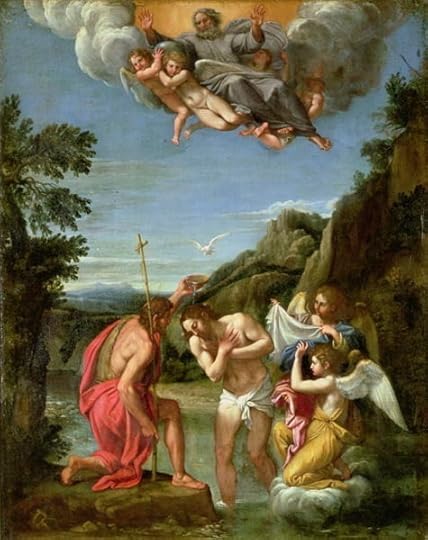 baptized? If, after all, baptism is for the remission of sins, why would the sinless, holy Son of God insist he go under the waters of baptism?
baptized? If, after all, baptism is for the remission of sins, why would the sinless, holy Son of God insist he go under the waters of baptism?
Not surprisingly, many of the Church Fathers contemplated this question. They recognized that God, in becoming man, had made a startling, transforming statement—through the Word—about the material world. All that has been created is good, and good things such as water, oil, bread, and wine will be used by God to bring grace and impart divine life.
The baptism of Christ was a cosmic blessing; it expressed, in actions and words, the profound gift of God's divine life. "Do you see, beloved," wrote Hippolytus (c. 170-c. 236), "how many how great blessing we would have lost if the Lord had yielded to the exhortation of John and declined baptism? For the heavens had been shut before this." By being baptized, Hippolytus explained, the Creator was creating again, creating anew. "So it happened not only that the Lord was being baptized—he also was making new the old creation. He was bringing the alienated under the scepter of adoption."
God did not become man, in other words, to merely make man more moral, or to help people get along better.
"In his Son and through him," states the first paragraph of the Catechism, God "invites men to become, in the Holy Spirit, his adopted children and thus heirs of his blessed life." This is the message of Christmas, as described so pithily by St. Paul: "But when the fullness of time had come, God sent his Son, born of a woman, born under the law, to ransom those under the law, so that we might receive adoption" (Gal. 4:4-5).
The Holy Spirit descended at the baptism of Christ and revealed the Trinity; he also disclosed the sanctifying work brought to man by the Incarnation, and by the death and resurrection of the Son. "The Spirit is the one who testifies," St. John writes in today's epistle, "and the Spirit is truth." There are, he noted, three that testify: the Spirit, the water, and the blood.
These three "are of one accord," for they testify to the truth and to the One who is the Truth, the Way, and the Life. All three are necessary for true baptism: the Holy Spirit fills man with new life, the water signifies the destruction of original sin and the infusion of divine life, and the blood of Christ regenerates man and restores his communion with God.
Later in the Gospel of Mark, Jesus identified his baptism with his approaching death on the Cross: "You do not know what you are asking," he said to James and John, "Can you drink the cup that I drink or be baptized with the baptism with which I am baptized?" When they insisted on being able, Jesus replied, "The cup that I drink, you will drink, and with the baptism with which I am baptized, you will be baptized" (Mk 10:38-39). Only through the death of Christ can we be baptized; only by baptism can we share in his life (cf. Rom 6:1-11).
John's baptism of water brought repentance, but more was needed. "So then John," explained St. Ambrose, "who was a type of the law, came baptizing for repentance, while Christ came to offer grace." That grace, which is the love and life of the Father, Son, and Holy Spirit, makes man holy. It makes man a son of God. That's why we are Catholic.
(This "Opening the Word" column originally appeared in the January 11, 2009, edition of Our Sunday Visitor newspaper.)
January 7, 2012
The new HPR site is up, running, and accessible to all
As of January 1st, the website for Homiletic & Pastoral Review site, HPRweb.com, is completely new. Although the print edition of the venerable journal is no longer being produced, new articles, editorials, reviews, and other features have been and will continue to be posted on the site.
HPR's editor, Fr. David Meconi, S.J., welcomes readers to the new HPRweb.com:
Welcome to the first-ever electronic issue of Homiletic and Pastoral Review!
After 111 years, the "what" we publish – to provide essays and homilies on the truths and the beauty of Jesus Christ and his one, true Church; and the "why" we publish—to help save souls; both remain the same. But the "how" we publish has changed. We are in no way ceasing publication, but the world of publishing is changing drastically before our very eyes.
Read his entire post.
Here are the new pieces that have been posted in the past week:
• The Catholic Faith Is Not a Noble Lie, by Thomas Storck. What is needed is a real debate on religious questions providing a rational public apologetic for the faith.
• Scripture Is a Unique Word, by Francis Etheredge. This Word of God continues the creativity of our Creator.
• John J. O'Rourke: Priest, Churchman, and Scholar (1926-1995), by Fr. Robert Nugent. "…scire etiam supereminentem scientiae caritatem Christi"
• Cross, Altar and the Right Way of Praying, by Fr. Stefan Heid. Recalling the rituals and rubrics of the past which retain their meaning today.
• Education As Transformation, by Mo Fung Woltering. The natural inclination to know rightly, and live nobly, is concept that was articulated by St. Thomas Aquinas, called connaturality.
• The Ignorance of Christ?, by Fr. Dylan Schrader. "When did Jesus know that he was God?"
• What is Moral Conscience?, by Rev. Thomas V. Berg. Refuting four mistaken ideas about conscience in light of the natural law tradition.
• Does Morality Inhibit Freedom?, by Kathleen Curran Sweeney. St. Thomas Aquinas gave primacy to the natural reason as formative in our free choices—the use of reason ordered to truth, and the will ordered to the good, uniting to make a choice.
• Confronting the Claim of Eastern Orthodoxy to be the True Church, by James Likoudis. Understanding the conflicting claims of Catholicism versus Eastern Orthodoxy.
• Scripture's Seamless Garment and the Foundational Life Issue, by Dr. Pat Guinan. The "seamless garment argument" versus the Biblical seamless garment, and how this ties into the primacy of a defense for the unborn
• On the Promises of God to Mankind, by Fr. James V. Schall, S.J. A review essay on David Goldman's book, It's Not the End of the World; It's Just the End of You.
• Seeing man from the eyes of Christ, by Fr. Kenneth Baker, S.J. Editorial.
• Chosen from Among Men, by Msgr. Michael A. Osborn. The same human qualities and skills that distinguish a fine candidate for marriage are necessary, as well, for fine candidates for the priesthood.
• Moral Theology after Humanae Vitae, by Msgr. Daniel B. Gallagher. A book review of Moral Theology After Humanae Vitae: Fundamental Issues in Moral Theology and Sexual Ethics, by D. Vincent Twomey, SVD.
• A Review of Women, Sex, and the Church (edited by Erika Bachiochi), by Kerri Lenartowick, M.A.
• A Review of The Martyred Inquisitor (by Donald Prudlo), by Fr. Brian Mullady, O.P.
• Letters from our readers. Responding to articles on issue of salvation for unbaptized infants by Pugh and Hildebrand
A number of articles and reviews from older issues of HPR are on the website; more will continue to be added. In addition, the site has a "Search" function (see the bottom left-hand portion of the site), and readers can sign up for the HPR Newsletter (see the top left-hand portion of the site). Readers can contact Fr. Meconi by e-mail or snail mail.
January 6, 2012
"Encountering God as Single Catholics"
That's the title of a one-day workshop being presented by author and speaker Mary Beth Bonacci on Saturday, January 22nd, in Littleton, Colorado. The details are available on Mary Beth's website.
Gasp! Rick Santorum is opposed to abortion and pornography! The horror! The gall!
Who does he think he is: a reasonable, respectable, pro-family, pro-life, anti-smut Catholic?
I write that in response to the article, "Santorum wants to impose 'Judeo-Christian Sharia'", penned by Dean Obeidallah, who is described as a comedian. That helps to explain why he wrote it for CNN, which many people do consider a joke:
4. No porn! I'm not kidding. Santorum signed "The Marriage Vow" pledge (PDF) authored by the Family Leader organization, under which he swears to oppose pornography. I think many would agree that alone should disqualify him from being president.
Oh, the deep belly laughs flow through the hip, college audience. Because we all know that cool people dig the degragation and objectification of women, the crass commercialization of sexual acts, and the continued destruction of virtue and basic morality. Yes, cool stuff, all that. However, considering that "comedian" Obeidallah also thinks marriage is an old-fashioned, stupid, soul-sucking, fun-killing sentence to eternal doom, I suppose it follows.
But back to Obeidallah's piece on Santorum, which is played for cheap laughs, but raises some serious points despite Obeidallah's inability to be either serious or knowledgeable about those points. He writes:
Then there's "Santorum Two." This Santorum wants to impose conservative Christian law upon America. Am I being hyperbolic or overly dramatic with this statement? I wish I were, but I'm not.
Plainly put, Rick Santorum wants to convert our current legal system into one that requires our laws to be in agreement with religious law, not unlike what the Taliban want to do in Afghanistan.
How does Obeidallah arrive at such stunning, if laughable, knowledge?
He told a crowd at a November campaign stop in Iowa in no uncertain terms, "our civil laws have to comport with a higher law: God's law."
On Thanksgiving Day at an Iowa candidates' forum, he reiterated: "We have civil laws, but our civil laws have to comport with the higher law."
Yes, that means exactly what you think it does: Santorum believes that each and every one of our government's laws must match God's law, warning that "as long as there is a discordance between the two, there will be agitation." I'm not exactly sure what "agitation" means in this context, but I think it's a code word for something much worse than acid reflux.
Goodness, that is horrifying stuff. What would the founders of this fair nation think of such radical, porn-smothering rhetoric? After all, it's not as though they saw any connection between God, natural law, and civil laws. Right?
Well:
When in the Course of human events, it becomes necessary for one people to dissolve the political bands which have connected them with another, and to assume among the powers of the earth, the separate and equal station to which the Laws of Nature and of Nature's God entitle them, a decent respect to the opinions of mankind requires that they should declare the causes which impel them to the separation.
That, Mr. Obeidallah, is the opening paragraph of the Declaration of Independence. Russell Kirk, in his seminal work, The Roots of the American Order (3rd edition, 1991), observed that this paragraph is an obvious reference to natural law, also noting, however, that "Whether the signers of the Declaration understood clearly what was meant by natural law, or could have agreed upon a clear definition of that term, has been inconclusively discussed" (pp 402, 403). Be that as it may, what Rick Santorum articulated is not only in keeping with what Kirk called "the roots of American order", it also reflects a basic Catholic understanding of the relationship between the divine law and natural law:
The "divine and natural" law shows man the way to follow so as to practice the good and attain his end. The natural law states the first and essential precepts which govern the moral life. ... This law is called "natural," not in reference to the nature of irrational beings, but because reason which decrees it properly belongs to human nature. ...
The natural law, the Creator's very good work, provides the solid foundation on which man can build the structure of moral rules to guide his choices. It also provides the indispensable moral foundation for building the human community. Finally, it provides the necessary basis for the civil law with which it is connected, whether by a reflection that draws conclusions from its principles, or by additions of a positive and juridical nature. (CCC, pars 1955, 1959)
Bottom line: Obeidallah's opposition to "Rick Santorum's Sharia law" is really a slightly obscured opposition to (and slanderous misrepresentation of) Catholic beliefs that are rooted in natural reason, not declarations of divinely revealed doctrine. These include the belief in the inherent dignity of all men (thus opposition to abortion, birth control, and pornography) and the unique and important place of marriage and the nuclear family in a society and civilization (thus opposition to "gay marriage").The key here is that this natural law, upon which civil law should rest, is "present in the heart of each man and established by reason, is universal in its precepts and its authority extends to all men" (CCC, par 1956).
Thus, the Declaration of Independence does not say, "We declare these truths to be true based on our authority and whim and mood and economic goals, etc.", but: "We hold these truths to be self-evident, that all men are created equal, that they are endowed by their Creator with certain unalienable Rights, that among these are Life, Liberty and the pursuit of Happiness" (emphasis added for Obeidallah fans).
There are plenty of good and proper questions that should be asked of Rick Santorum and the other candidates. After all, every presidential candidate (with the possible exception of Sen. Obama) must undergo the sort of scrutiny, criticism, and relentless analysis that would drive most people insane. Some of that is acceptable and necessary; some of it is partisan and borders on rude and uncharitable. And some of it is simply mud-slinging, fact-smashing vitriol. Obeidallah's piece obviously falls into the latter. I suggest he sticks to comedy—the intended variety.
Learning to Worship From the Magi
A Scriptural Reflection on the Readings for Feast of the Epiphany of the Lord | Carl E. Olson
Readings:
• Isa 60:1-6
• Ps 72:1-2, 7-8, 10-11, 12-13
• Eph 3:2-3a, 5-6
• Mt 2:1-12
"Worship", observed Fr. Gerald Vann, O.P., "is not a part of the Christian life: it is the Christian life."
Fr. Hans Urs von Balthasar, in a sermon given on the Solemnity of the Epiphany of the Lord, wrote that God, in his epiphany, "has lost nothing of his incomprehensibility. Only now do we begin to suspect how far divine omnipotence reaches into reality. Thus there can be no more profound worship than Christian worship, which is authentic." 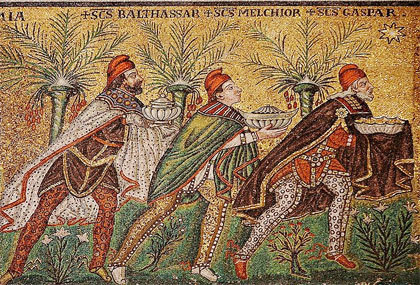
Today's solemnity is a celebration of the epiphaneia—the revelation and manifestation—of God in the form of a man, Jesus the Christ. Throughout the centuries, beginning in the East and the later in the West, this feast focused on three different but closely related events: the visitation of the Magi, the baptism of Jesus in the Jordan, and the turning of water into wine at the wedding feast of Cana. Each reveals the radical, transforming truth of the Incarnation. And each, in turn, opens up further the mystery of God and calls man to worship and adore him.
The mystery of the Incarnation and the call to worship are central in today's Gospel, which recounts the well-known story of the magi from the east seeking "the newborn king of the Jews." The magi are among the most mysterious figures in the Gospel; we don't even know how many journeyed to find Jesus, although the total of three has become the popular number. In the ancient Near East a magus could have been one of several things: a magician, a Persian priest, or even a man practicing occultic arts. But these men were most likely Persian astrologers, with a reputation for being skilled at studying and interpreting the movements of the stars and planets.
St. Matthew's Gospel often refers to Old Testament prophecies that were fulfilled in and through the coming of Christ (Mt. 2:17, 23; 4:14; 13:14; 27:9). In writing of the magi, he pointed his readers to Isaiah 60, today's reading from the Old Testament. There the prophet Isaiah wrote of a coming time when the glory of Jerusalem would fill and bless the entire word: "Nations shall walk by your light, and kings by your shining radiance." The wealth of nations—including gifts of "gold and frankincense—would be brought by foreign kings, who would worship God in the holy city, "proclaiming the praises of the Lord."
And today's responsorial Psalm also emphasizes this theme of worship: "May the kings of Tarshish and the islands bring tribute, the kings of Arabia and Seba offer gifts. May all kings bow before him, all nations serve him" (Ps. 72:10-11).
This highlights a truth often proclaimed by Jesus: that the Kingdom of God is offered to and will include peoples from all nations. And the magi represent the first of a vast number of Gentiles brought into the family of God through the Christ-child, who is the King of the Jews and the King of kings. Even in his quiet and hidden birth, Jesus began to draw all men to himself.
"In the magi," the Catechism states, "representatives of the neighbouring pagan religions, the Gospel sees the first-fruits of the nations, who welcome the good news of salvation through the Incarnation" (par. 528). In the New Covenant the radiant glory of the Lord will shine upon all people, dispelling the darkness of sin and despair.
The actions and responses of the magi reveal how the divine light destroys the darkness and leads to worship of the true God. First, they saw the star and recognized that is was unique. Secondly, upon having this epiphany (itself a divine gift of grace), they traveled in order "to do him homage". They had no fear of seeking the newborn king of the Jews because they were filled with joy and anticipation. Third, they into the presence of Jesus and "prostrated themselves and did him homage." Having worshiped him, they offered gifts. We, too, are called to worship, for worship is the Christian life.
[This "Opening the Word" column originally appeared in the January 2, 2011, edition of Our Sunday Visitor newspaper.]
Related:
• Wise Men from the East and the Feast of the Epiphany of the Lord | Sandra Miesel
• "A strange mingling of light and shadow..." | On the Feast of Epiphany | Carl E. Olson (Jan. 2010)
• "You have revealed Yourself to the world today, and your light, O Lord, has shined upon us" | Carl E. Olson (Jan. 2011)
The Truth About Falsely Accused Priests

The Truth About Falsely Accused Priests | A Catholic World Report Interview with Dave Pierre, author of Catholic Priests Falsely Accused: The Facts, The Fraud, The Stories
The accused are often presumed guilty until proven innocent, while the media distorts the narrative of child abuse in the US.
Dave Pierre is a journalist who operates TheMediaReport.com, which examines anti-Catholicism and bias in today's media, and the author of two books, Double Standard: Abuse Scandals and the Attack on the Catholic Church and Catholic Priests Falsely Accused: The Facts, The Fraud, The Stories. Dave is also a contributing writer to NewsBusters.org, a blog of the Media Research Center covering media bias. In this Catholic World Report interview, he discusses his new book, Catholic Priests Falsely Accused, and offers his thoughts about the media's coverage of the Catholic Church abuse narrative.
Catholic World Report: When and how did you first become interested in the Catholic clergy abuse scandals and the dominant media coverage of those scandals?
Dave Pierre: When I was living in Los Angeles, I became a contributing writer to NewsBusters.org, the popular media-bias blog of the Media Research Center. I would frequently look at the Los Angeles Times. A number of years ago, I noticed that the paper published a very large, 3,800-word piece on the front page about decades-old abuses that were alleged to have been committed by Catholic clergy in remote villages of Alaska. Indeed, many of the stories were heart-wrenching, painful, and tragic. However, months later, the shocking story of a Southern California teacher who may have molested as many as 200 children was buried on page B3.
I soon began to notice a trend: the Times was often giving front-page coverage to stories about Catholic priests alleged to have committed abuse decades ago. Meanwhile, arrests of public school teachers for abuse happening today were often not reported or buried in the "news briefs" section.
The double standard was glaring.
Catholic World Report: Some Catholics are very upset about the way the mainstream media has covered the scandals since the 1990s; others say the media has done the Church a great service in exposing cases of abuse and attempts to cover up those cases. What would you say about those two positions? What do you think of the media coverage, especially by the major newspapers and news outlets?
January 5, 2012
Wise Men from the East and the Feast of the Epiphany of the Lord

Wise Men from the East | Sandra Miesel | The Feast of the Epiphany of the Lord
We Three Kings of Orient are,
Bearing gifts we traverse afar. . . .
Who were these gift-bearing kings, these Wise Men of the East? What has their mission meant to Christians across the ages?
The Wise Men—not yet called kings—make only a single appearance in Holy Scripture. St. Matthew's Gospel (Mt 2:1-12) tells of their arrival in Jerusalem shortly after the birth of Jesus. They have come seeking the newborn King of the Jews because they had seen his star rise in the East. Herod, the current ruler, knows nothing of an upstart princeling but learns that prophecies place him in Bethlehem. Herod directs the Wise Men to search there for the Child and keep him informed. Following their star, the Wise Men find Jesus with his Mother. They worship him and bestow gifts of gold, frankincense, and myrrh. Warned by an angel, they do not reveal the Child's location to jealous Herod but return secretly to their own land.
In ancient texts of Scripture the Wise Men are Magoi in Greek and Magi in Latin. The singular form, Magos/Magus, is the source of our English word "magician" but had multiple meanings in Biblical times. A magus could be a Zoroastrian priest from Persia, an occultist, a magician, or a charlatan. Because the New Testament Magi study the stars, their mystic wisdom presumably includes astrology. Hence some recent Bible translations call them "astrologers," a less evocative term than the more traditional "Wise Men."
Some early Christians equated the Magi with Chaldean star-readers from Babylon, masters of the occult familiar throughout the Roman Empire. St. Justin Martyr and Tertullian thought they were Arabians but most believers in Patristic times took their Persian origin for granted.
Church Fathers were quick to see deeper symbolism in this curious episode, first through its Old Testament parallels. Origen suggested that the Magi were descendants of the pagan prophet Balaam who had predicted that "a star shall rise out of Jacob" (Num. 24:17). Other Old Testament figures including the priest-king Melchizedek (Gen. 14:18-20), the generous Queen of Sheba (1 Kgs. 10), and the faithful Three Young Men in the Fiery Furnace (Dan. 3) were also seen as counterparts of the Wise Men from the East.
Strangers who worship the new King of Judah and bring gifts fulfill Messianic prophecies. "The kings of Tarshish and the Isles shall offer gifts; the kings of Arabia and Seba shall bring tribute" (Ps. 72:10). "All they from Sheba shall come, bearing gold and frankincense, and proclaiming the praises of the Lord." (Isa. 60:6) Because the Scriptures speak of tributary kings, Tertullian called the Magi kings. Origen specified that they numbered three to match their gifts and their named kingdoms. St. John Chrysostom preached about twelve Wise Men but his interpretation failed to find favor.
These foreigners, the first Gentiles to see the Light, recognize what Herod and the Temple priesthood cannot: the newborn Savior. The wealthy, learned, alien Magi of St. Matthew's Gospel complement the poor, ignorant, local shepherds of St Luke's Gospel. Foreshadowing the universality of the Church, these Gentiles and Jews worship God Incarnate to show that salvation is offered to all men.
St. Irenaeus of Lyons was the first Church Father to equate the Wise Men's gifts of gold, frankincense, and myrrh with Christ's roles as King, God, and Sacrifice. This became the dominant reading, still familiar through the beautiful Victorian Christmas carol, "We Three Kings of Orient Are." But other interpretations also appeared in which the gifts stand for the virtues of faith, chastity, and purity of heart or else for almsgiving, prayer, and mortification.
The Christ Child's adoration by the Magi is known as his Epiphany ("Manifestation") because it announces his mission to redeem the world. Ancient Christendom spoke of multiple manifestations (initially including the Nativity) by linking the revelation of the newborn Christ with his later baptism in the Jordan and his first miracle at Cana. These key points in his mission, which were imagined to have occurred on the same calendar date, also used to be celebrated in the pre-Vatican II Roman breviary. As an Epiphany antiphon at Vespers proclaims, "We honor the holy day adorned with three miracles: today the star led the Magi to the crib: today wine was made from water for a wedding: today Christ willed to be baptized by John in the Jordan." In medieval Europe, Epiphany was often connected with the miracle of the loaves and fishes and with the raising of Lazarus.

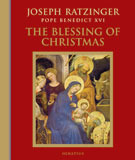
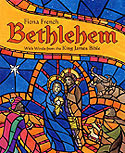
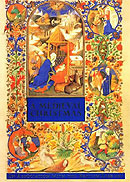

The traditional date of Epiphany is January 6th although in some places, including the United States, the feast is transferred to the nearest Sunday. Epiphany is an older feast than Christmas for it is attested in the East from the first half of the third century, at least 75 years before Christmas is mentioned as a holy day in Rome.
By the late fourth century Christmas was also being celebrated in the East so Epiphany lost its Nativity connection there. The Baptism of the Lord became the chief focus of Epiphany and the subject of its special feast day icon. The public manifestation of Christ as the Divine "beloved Son" outranked the private homage of the Magi, who were relegated to the background of Nativity icons.
Nevertheless, the Adoration of the Magi has been a popular subject for artists since Late Antiquity. The earliest surviving examples are catacomb paintings from the second and third centuries and carvings on stone coffins from the first half of the fourth century. On the coffins, three nearly identical Magi process toward the enthroned Madonna and Child. Their gifts allude to the alms the deceased person had given in his lifetime. Famous mosaics depicting the Magi also appear in the churches of S. Maria Maggiore in Rome (440) and S. Apollinare Nuovo in Ravenna (561). The Magi are represented in exotic "Eastern" garb, wearing tunics, leggings, and soft peaked caps. They observe imperial Roman court etiquette by presenting their gifts with covered hands or on trays. The gold is often in the form of a royal wreath and the star appears as an emblem of divine kingship.
By the tenth century, Western artists are portraying the Wise Men with crowns. They grow distinguishable because they have come to stand for the three ages of man, the three known continents of the Old World, and three races descended from the sons of Noah. In later medieval art the Magi lay aside their crowns to interact with the Christ Child and receive his blessing. Their garments become increasingly fantastic and their faces are often modeled on contemporary rulers. By the fourteenth century, the youngest Magus is portrayed as a black African in many Northern European paintings. In subsequent centuries, other racial types joined the trio, including East Indians, Asians, Incas, and Canadian Indians, so that the Wise Men could represent all nations.
The thirteenth century Golden Legend gives the Magi's names in Greek as Apellius, Amerius, and Damascus; in Hebrew as Galgalat, Malgalat, and Serchin; and in Latin as Caspar, Balthasar, and Melchior—the favorite set. There are inconsistencies about which Magus is which but in Germanic lands, Casper (gold) is elderly; Melchior (frankincense) is middle-aged; and Balthasar (myrrh) is young. The gifts are presented in order of age.
The center of the Magi's cult is Cologne. The cathedral there boasts a splendid golden shrine holding their relics that has drawn swarms of pilgrims since the twelfth century. The Kings' protection is traditionally invoked against travel dangers, plague, fever, and sudden death. Their initials C+M+B form a protective acronym for Christus mundum benedicat ("Christ blesses the world"). The faithful carry this symbol on holy cards or chalk it over their doors to ward off evil.
The alleged remains of the Magi are claimed to have been discovered in the East by St. Helena and brought to Milan in 400, whence they were looted by Frederick Barbarossa in 1162 and given to Cologne. Historian Patrick Geary has argued persuasively that Milan never had any relics of the Wise Men. Yet the bones in the shrine were wrapped in genuine purple silk from St. Helena's lifetime so some ancient parties unknown have been passing as the Magi for eight centuries.
Regardless of authenticity, the Three Holy Kings have had great cultural impact on Cologne as the city's male patron saints. Their crowns appear on the arms and banner of the city as well as on the seals of her archbishop and university. The Magi themselves bear heraldic arms. Caspar's are a golden star and crescent on a blue field; Melchior's six gold stars on a blue field, and Balthasar's a red-clad Moor holding a lance with pennant on a golden field.
Thus Scripture and legend have combined to honor the Wise Men of the East as universal symbols of mankind adoring God Incarnate. May these first pilgrims who traveled by the light of a star "guide us to the Perfect Light."
Originally published in the Catholic Herald newspaper, January 2007. Reprinted by permission of the author.
Related IgnatiusInsight.com Articles on Advent and Christmas:
• The Perfect Faith of the Blessed Virgin | Carl E. Olson
• Mary's Gift of Self Points the Way | Carl E. Olson
• Immaculate Mary, Matchless in Grace | John Saward
• The Medieval Mary | The Introduction to Mary in the Middle Ages | by Luigi Gambero
• The Mystery Made Present To Us | Fr. Alfred Delp, S.J.
• Remembering Father Alfred Delp, S.J., Priest and Martyr | A Conversation with Father Karl Adolf Kreuser, S.J.
• Assumed Into Mother's Arms | Carl E. Olson
• The Disciple Contemplates the Mother | Erasmo Leiva-Merikakis
• The Incarnation | Frank Sheed
• "Born of the Virgin Mary" | Paul Claudel
• The Old Testament and the Messianic Hope | Thomas Storck
• Christmas: Sign of Contradiction, Season of Redemption | Fr. James V. Schall, S.J.
• The God in the Cave | G.K. Chesterton
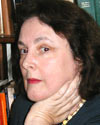 Sandra Miesel is the co-author, with Pete Vere, of Pied Piper of Atheism: Philip Pullman and Children's Fantasy and co-author, with Carl E. Olson, of the best selling The Da Vinci Hoax: Exposing the Errors in The Da Vinci Code. She holds masters' degrees in biochemistry and medieval history from the University of Illinois.
Sandra Miesel is the co-author, with Pete Vere, of Pied Piper of Atheism: Philip Pullman and Children's Fantasy and co-author, with Carl E. Olson, of the best selling The Da Vinci Hoax: Exposing the Errors in The Da Vinci Code. She holds masters' degrees in biochemistry and medieval history from the University of Illinois.
Since 1983, she has written hundreds of articles for the Catholic press, chiefly on history, art, and hagiography. She regularly appears in Crisis magazine and is a columnist for the diocesan paper of Norwich, Connecticut. Sandra has spoken at religious and academic conferences, appeared on EWTN, and given numerous radio interviews. Outside the Catholic sphere, she has also written, analyzed, and edited fiction. Sandra and her late husband John raised three children.
Funny, but false. Funny, and true.
First, the "Funny, but false", from a comment left in response to my CWR post about Rick Santorum's strong showing in Iowa:
So, are you one of "Obama's Catholics"?
I noted that suggesting that I am an "Obama Catholic" is like saying Pope Benedict XVI is a liberation theologian who wishes all Masses featured puppet shows and rock bands. Goodness. All you have to do is read one of my many posts raking Douglas Kmiec over the coals to know how laughable that remark really is.
Speaking of Santorum, Conrad Black nails it:
We will have to wait to see whether Rick Santorum's jump to a virtual dead heat with Mitt in Iowa is enough to bring out the anti-non-Mitt assassination squads. Santorum is an unusually fervent Roman Catholic for a presidential candidate and such an emergence would doubtless treat us all, one more time, to Gail Collins and Maureen Dowd of the New York Times dusting off their former little selves as intellectually abused Catholic choir girls and Garry Wills acolytes in dogmatic schism. Who better to impose the inverse auto-da-fé than the twin Zouave giggly snipers of the Times?
For those of us who take an interest in the vagaries of the Roman Church, the virtuoso performances of Ms. Collins and Ms. Dowd as earnest, questing papists, almost heartbroken at the failure of the last two popes to undergo sex-change operations and turn the Church into a polling organization, and at other, less glaring illiberalities, are like the concluding number in Chicago of Catherene Zeta-Jones and Renée Zellweger.
That's funny. And, I think, true. Read the entire NRO piece.
"Two Key Misconceptions about the Boston Scandal" by Phil Lawler
Philip F. Lawler, editor emeritus of Catholic World Report, reflects on the tenth anniversary of the first reporting of the Boston scandals:
Ten years have passed since the Boston archdiocese was engulfed in scandal, as the result of investigative reporting by the Boston Globe. Today the faithful in Boston are still struggling to shake off the lingering effects of that scandal. But a full recovery is delayed because of two popular misconceptions, which should be corrected.
First, the scandal exposed by the Globe in January 2002 was not the sexual abuse of young people by Catholic priests. That scandal had already been exposed a full decade earlier, as sickening stories of clerical molesters emerged from Louisiana and from nearby Fall River, Massachusetts. By the turn of the century, anyone who followed the story carefully recognized that these cases were not isolated—that the problem was widespread.
The Globe expose added an entirely new dimension to the story, revealing a second scandal. While some priests abused children, the Globe reporting showed, archdiocesan officials had protected the predators, covered up evidence, and lied to parishioners about their priests' problems. The Globe exposed the corruption within the Boston hierarchy which had allowed the abuse to continue.
Within a few months after the appearance of that shocking investigative coup—during what the late Father Richard Neuhaus called the "long Lent" of 2002—a similar pattern of episcopal corruption was exposed in many other American dioceses. Only a small percentage of the Catholic priests in the US were charged with abusing children, but a very large percentage of the country's bishops (fully two-thirds, according to an exhaustive search through the available evidence by the Dallas Morning News) had been implicated in the cover-up.
Read the entire piece on the Catholic World Report blog. Phil is the editor of Catholic World News (cwnews.com) and author of The Faithful Departed: The Collapse of Boston's Catholic Culture, the acclaimed book about the priestly scandals in Boston.
January 4, 2012
New: "In Memory of Me: Meditations On The Roman Canon" by Milton Walsh
Now available from Ignatius Press:
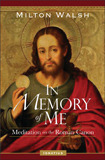 In Memory of Me: Meditations On The Roman Canon
In Memory of Me: Meditations On The Roman Canon
by Milton Walsh
• Also available in Electronic Book format
Foreword by Archbishop J. Augustine DiNoia, O.P., Secretary of the Congregation for Divine Worship and the Discipline of the Sacraments
The Roman Canon, also known as the First Eucharistic Prayer, holds a privileged place among the texts used in the Mass. With the release of a new English translation of the Latin Roman Missal, Milton Walsh's timely meditation on the Roman Canon can help priests, religious, and laity deepen their understanding of the text that for centuries was the only Eucharistic prayer used in the Roman Rite.
Drawing on the biblical and liturgical scholarship of the twentieth century, Walsh provides spiritual reflections on each of the prayers that make up the Roman Canon. This ancient prayer took shape during the golden age of the Fathers of the Church, from the fourth to the sixth centuries, and it is rich in biblical allusions and theological meaning.
In Memory of Me explores the themes of thanksgiving, offering, and intercession that recur throughout the prayer. It explains the centrality of sacrifice in the Eucharist, not only Christ's sacrifice on the Cross and the sacrifice of the Mass, but also the offerings of the Old Testament and the self-offering of the martyrs. The trinitarian nature of the Canon, in particular the question of the role of the Holy Spirit, is also treated, as well as the relationship between earthly and heavenly worship.
"In Memory of Me combines liturgical scholarship, theological reflection, and liturgical piety in a way that will deepen your understanding of the Eucharist and nourish your spiritual life." -- Most Rev. J. Augustine DiNoia, O.P., Secretary of the Congregation for Divine Worship and the Discipline of the Sacraments
"With a revised English translation of the venerable Roman Canon, many Catholics will be hearing it with new ears. This book will help them hear it with a new heart. Don't just study the new words, step into the soul of Eucharistic Prayer I." -- Rev. Paul Turner, Former president of the North American Academy of Liturgy
Carl E. Olson's Blog
- Carl E. Olson's profile
- 20 followers



